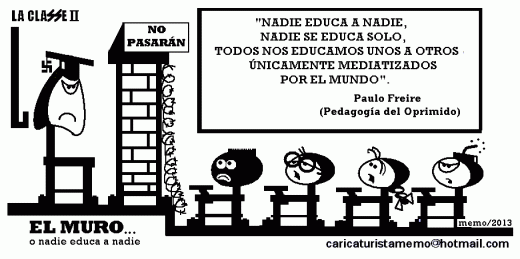How participatory methods from language learning could be applied to the educational model to provide bottom-up learning strategies
Posted on November 30, 2017As Transdisciplinary designers, we strive to and encourage others to work using bottom-up strategies. In this way, communities that we design for will have some ownership of the design, so it will be more useful and personalized to that communities’ nuanced necessities. Participatory research is essential in our design interventions because without it, it is hopeless in ever coming to an understanding of the community that we are not naturally a part of. However, I think to myself every Thursday in class, why are people not participating? We are all students of relevant disciplines and have a wealth of knowledge and professional experience in those diverse areas of practice. Why are many classes preventing us from taking advantage of the opportunity to learn from each other?
The current education model, even at such a forward-thinking university is still deeply ingrained in a top-down classroom routine. This is not an issue necessarily, however, when we are learning about imperialism, colonialism and privilege, it is a little ironic when considering that 90% of the teachers in our program are white, privileged males–the exact people that our readings are claiming to be problematic in the creation of a biased reality.
As Paulo Freire wrote in Pedagogy of the Oppressed, a teacher in traditional education “is to ‘fill’ the students with the contents of his narration — contents which are detached from reality, disconnected from the totality that engendered them and could give them significance.” He refers to top-down educational environments where students are seen as “vessels” and teachers as there to “fill” them with their superior knowledge. This “banking approach to adult education, for example, will never propose to students that they critically consider reality,” a reality that has decidedly lead us to a plethora of wicked problems.
As an EFL (English as a Foreign Language) teacher for the past 6 years to university and professional students, I am quite surprised when returning to the US educational system as a student. In Language Learning classes, admittedly the objective is quite different in that we teach a skill and then use it in context. For example, I might do a quick 10 minute review of the present simple and then spend the next 20 minutes doing a controlled practice exercise and 60 minutes doing an embodied conversation with different partners. My classes are never silent, students are always contributing and asking questions and practicing the themes that are “taught” in the class. If my classes were as disengaged in their learning as I feel some of the students are in the classes that I attend now at a graduate level, I would be panicking as a teacher and looking frantically for ways to spark more discussion. How might these same methods of language learning and student engagement be applied at a US-graduate program level?

Megan